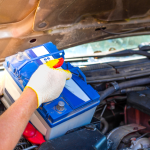When it comes to driving, we all like to think we’re pretty skilled behind the wheel. However, even the most experienced drivers can fall prey to common mistakes that can lead to costly consequences. From overlooking simple traffic rules to misjudging the risks of seemingly harmless behaviors, these missteps can not only drain your wallet but also jeopardize your safety on the road.
In this article, we’ll explore some of the most frequent driving errors that could end up costing you—both financially and in terms of peace of mind. Whether you’re a seasoned driver or a new license holder, understanding these pitfalls is essential for fostering a safer driving environment. Join us as we dive in and equip you with the knowledge to steer clear of these costly misjudgments!
Table of Contents
- Understanding the Hidden Costs of Poor Driving Habits
- Essential Tips to Enhance Your Defensive Driving Skills
- Navigating the Legal Landscape: What You Need to Know
- Budgeting for Unexpected Driving Expenses: Be Prepared
- Q&A
- Concluding Remarks

Understanding the Hidden Costs of Poor Driving Habits
Many drivers underestimate the financial repercussions of poor driving habits, which can accumulate over time and lead to significant expenses. Aggressive driving, such as tailgating or rapid lane changes, may result in increased fuel consumption, raising your gas expenses. Additionally, frequent harsh braking can wear down brake pads and other components more quickly than normal driving, leading to costly repairs. It’s also important to consider the potential costs associated with accidents that stem from reckless driving behavior.
Another hidden cost comes from ignoring regular vehicle maintenance. Skipping oil changes and neglecting tire rotations can lead to severe engine issues and compromised safety. Here are a few costs often overlooked due to poor driving habits:
| Driving Habit | Potential Cost |
|---|---|
| Speeding | Increased fuel consumption |
| Frequent hard braking | Brake repairs and replacements |
| Neglecting maintenance | Expensive repairs |
| Distracted driving | Insurance premiums after accidents |
By being mindful of these factors, drivers can not only improve their safety but also save money in the long run.
Essential Tips to Enhance Your Defensive Driving Skills
Enhancing your defensive driving skills is essential for staying safe on the roads. Always maintain a safe following distance from the vehicle ahead to ensure you have ample time to react to sudden stops. Use the “three-second rule” as a guideline: if the car in front of you passes a fixed point, count to three before your vehicle reaches that same point. Additionally, stay alert to your surroundings and anticipate potential hazards by scanning the road ahead, checking mirrors frequently, and keeping an eye out for pedestrians and cyclists. Avoid distractions, such as mobile devices, to maintain your focus.
Another critical aspect of defensive driving is mastering the art of predictable maneuvers. Use your turn signals to communicate your intentions to other drivers and always check blind spots before changing lanes. Adjust your speed to match road conditions—this means slowing down in inclement weather or during heavy traffic. It’s also a good practice to anticipate the behavior of other drivers; if someone appears to be driving erratically, maintain your distance and be prepared to react. By incorporating these strategies into your driving routine, you can significantly reduce the risks associated with common driving mistakes.
Navigating the Legal Landscape: What You Need to Know
Understanding the intricate web of legal regulations surrounding driving is essential for all motorists. Whether you’re a seasoned driver or just starting, being aware of the rules can save you from potential pitfalls. Common mistakes often stem from assumptions that can lead to costly penalties. To navigate this landscape effectively, consider the following:
Ignoring Local Laws: Familiarize yourself with the specific driving regulations in your area, as they can vary significantly.
Disregarding Traffic Signs: Always pay attention to road signs; they provide crucial information that can affect your safety and legal standing.
Driving Without Insurance: Make sure your vehicle is insured to avoid hefty fines and legal trouble.
Neglecting Vehicle Maintenance: A well-maintained vehicle reduces the risk of accidents and violations related to equipment failures.
Additionally, keeping track of your driving record is vital for maintaining a clean slate. A table summarizing some key legal aspects can help drivers stay informed:
| Violation | Potential Penalty |
|---|---|
| Reckless Driving | Fines up to $1,000 |
| Driving Without a License | Fines and Possible Jail Time |
| Speeding | Fines increase with speed above limit |
| DUIs | Heavy fines and license suspension |
Budgeting for Unexpected Driving Expenses: Be Prepared
Driving often brings unexpected costs that can significantly impact your budget if you’re not prepared. Whether it’s an unforeseen repair or an increase in fuel prices, these expenses can emerge out of nowhere. To mitigate the financial strain that comes from such surprises, it’s essential to allocate a specific portion of your monthly budget to cover potential driving-related costs. Consider setting aside funds for the following:
Emergency repairs: A flat tire or engine failure can happen at any time.
Routine maintenance: Don’t forget about oil changes, tire rotations, and brake checks.
Increased fuel prices: Prices can fluctuate, so keep an eye on trends.
Parking and toll fees: These can add up, especially in urban areas.
To further improve your financial readiness, create an emergency fund specifically for your vehicle needs. This fund should ideally cover three to six months’ worth of anticipated driving expenses. Use the table below to visualize how small monthly contributions can build up over time:
| Monthly Contribution | 3 Months Savings | 6 Months Savings |
|---|---|---|
| $50 | $150 | $300 |
| $100 | $300 | $600 |
| $150 | $450 | $900 |
By planning ahead and creating a financial buffer, you can enjoy peace of mind knowing you are prepared for any driving expenses that may come your way.
Q&A
Q&A: Driving Act That Could Cost You – Avoid These Common Mistakes
Q1: What are some common driving mistakes that can lead to costly consequences?
A1: Many drivers unknowingly commit mistakes that can result in heavy fines or increased insurance premiums. Common mistakes include speeding, distracted driving (like using your phone), running red lights, driving under the influence, and failing to yield to pedestrians. It’s essential to be mindful of your driving habits to avoid these costly errors.
Q2: How can speeding affect my finances?
A2: Speeding can lead to hefty fines and points on your driving record, which may cause your insurance rates to soar. Repeated speeding violations can even lead to license suspension, not to mention the potential costs of accidents that could occur when driving too fast.
Q3: What are the risks associated with distracted driving?
A3: Distracted driving, especially texting or using your phone while behind the wheel, significantly increases the risk of accidents. Besides the danger to your safety and others on the road, if caught, you could face fines and legal issues, as well as higher insurance premiums.
Q4: Why is it crucial to stop at red lights?
A4: Running a red light is not only illegal but also incredibly dangerous. If caught, you’ll likely incur a substantial fine and possibly receive points on your license. More importantly, failing to stop can lead to severe accidents, which can bring about even higher costs in repairs, medical bills, and legal fees.
Q5: How does driving under the influence impact my wallet?
A5: Driving under the influence (DUI) is one of the most expensive mistakes a driver can make. The costs include fines, legal fees, court costs, and potential jail time. Additionally, a DUI conviction can lead to increased insurance rates and even the cost of installing an ignition interlock system in your vehicle.
Q6: Can failing to yield to pedestrians really cost me?
A6: Yes, failing to yield to pedestrians can have serious financial implications. If you hit a pedestrian, you could face costly medical expenses, legal fees, and even lawsuits. Moreover, local laws often impose fines for failing to stop for pedestrians in crosswalks, which can add up quickly.
Q7: What are some tips to avoid these driving mistakes?
A7: To steer clear of costly driving errors, always stay attentive and focused on the road. Use hands-free devices to minimize distractions, adhere to speed limits, and practice defensive driving. Familiarize yourself with local traffic laws and always prioritize safety for yourself and others on the road.
Q8: Is it worth taking a driving course to improve my skills?
A8: Absolutely! Taking a defensive driving course can not only enhance your driving skills but may also qualify you for discounts on your insurance. It shows that you are committed to being a responsible driver, which insurance companies often reward.
Q9: What should I do if I receive a traffic ticket?
A9: If you receive a ticket, carefully read the details and understand your options. You can choose to pay the fine, contest the ticket in court, or enroll in a traffic safety course (where applicable). Remember, addressing the ticket promptly can help you avoid additional fines or penalties.
Q10: How often should I review my driving habits?
A10: It’s a good idea to periodically assess your driving habits, at least once a year or after any incidents. Self-reflection can help you recognize any areas for improvement, ensuring you stay aware and safe on the road.
By being aware of these common mistakes and taking steps to avoid them, you can save yourself from unnecessary expenses and ensure a safer driving experience for everyone. Stay mindful, stay safe, and happy driving!
Concluding Remarks
navigating the roadways comes with responsibilities that extend beyond simply following the speed limit. The Driving Act is designed to keep us all safe, but it can also lead to unexpected costs if we aren’t careful. By familiarizing yourself with the common mistakes outlined in this article, you can make informed choices and avoid unnecessary fines and penalties. Remember, safe driving is not just about adhering to the law; it’s about being a responsible and considerate member of the driving community. So, let’s hit the road with confidence,, knowing that we’re making choices that benefit not only ourselves but also our fellow road users. Drive safe and stay savvy!









